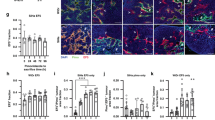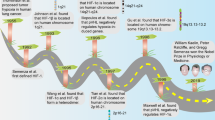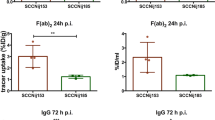Abstract
The x-ray dose required to cure half the mice bearing first generation transplanted mammary carcinomata 150 days after irradiation was determined. NDPP proved to be a relatively poor radiosensitizer in mice, for although a maximum enhancement ratio of 1-3 was obtained when x-rays produced from a 1-4 MeVp electron accelerator were given between 10 and 17 min after the administration of NDPP, this was at a drug concentration sufficient to cause marked kidney abnormalities in 5-10% of the mice.
This is a preview of subscription content, access via your institution
Access options
Subscribe to this journal
Receive 24 print issues and online access
$259.00 per year
only $10.79 per issue
Buy this article
- Purchase on Springer Link
- Instant access to full article PDF
Prices may be subject to local taxes which are calculated during checkout
Similar content being viewed by others
Rights and permissions
About this article
Cite this article
Sheldon, P., Smith, A. Modest radiosensitization of solid tumours in C3H mice by the hypoxic cell radiosensitizer NDPP. Br J Cancer 31, 81–88 (1975). https://doi.org/10.1038/bjc.1975.10
Issue Date:
DOI: https://doi.org/10.1038/bjc.1975.10



